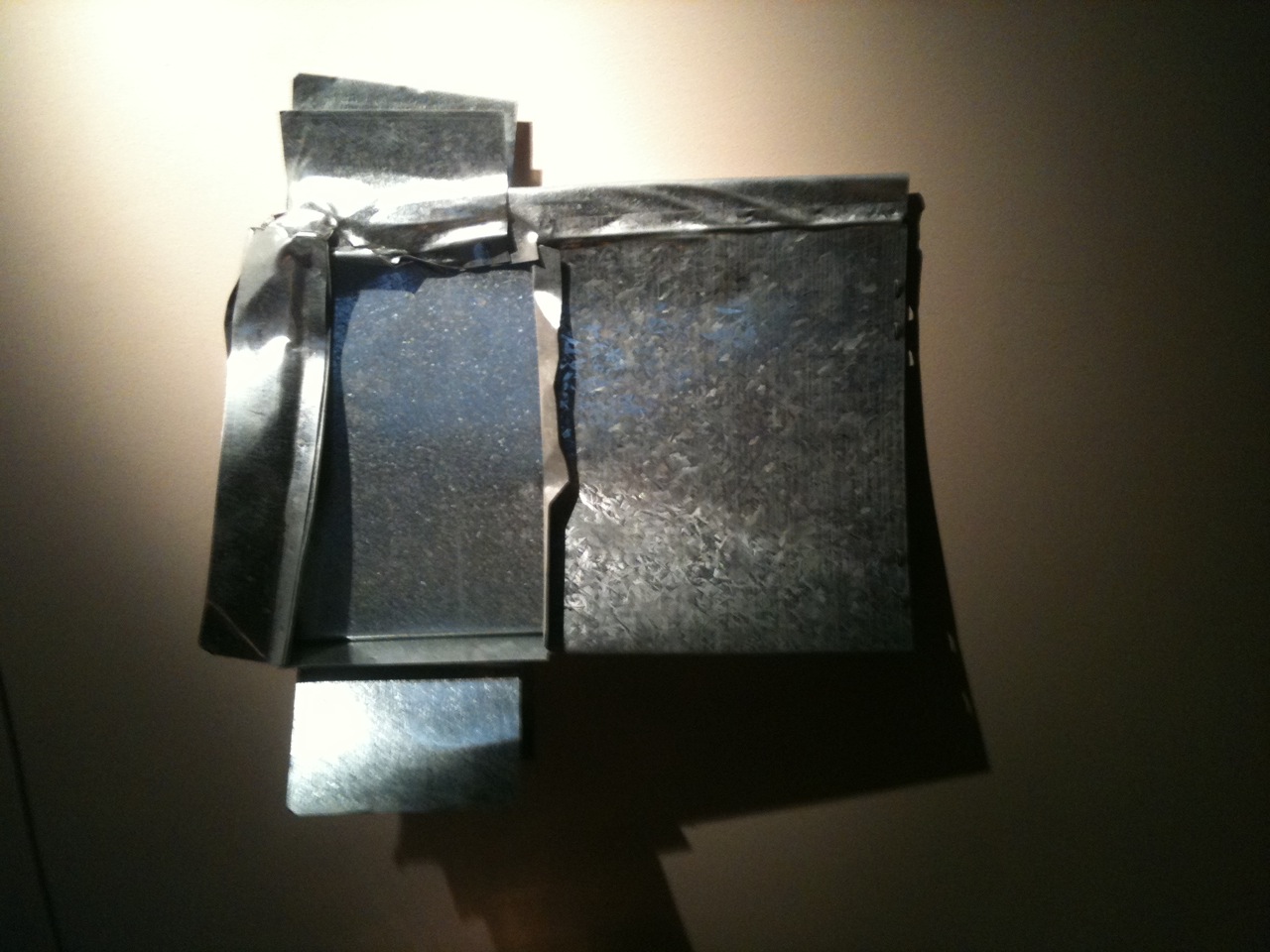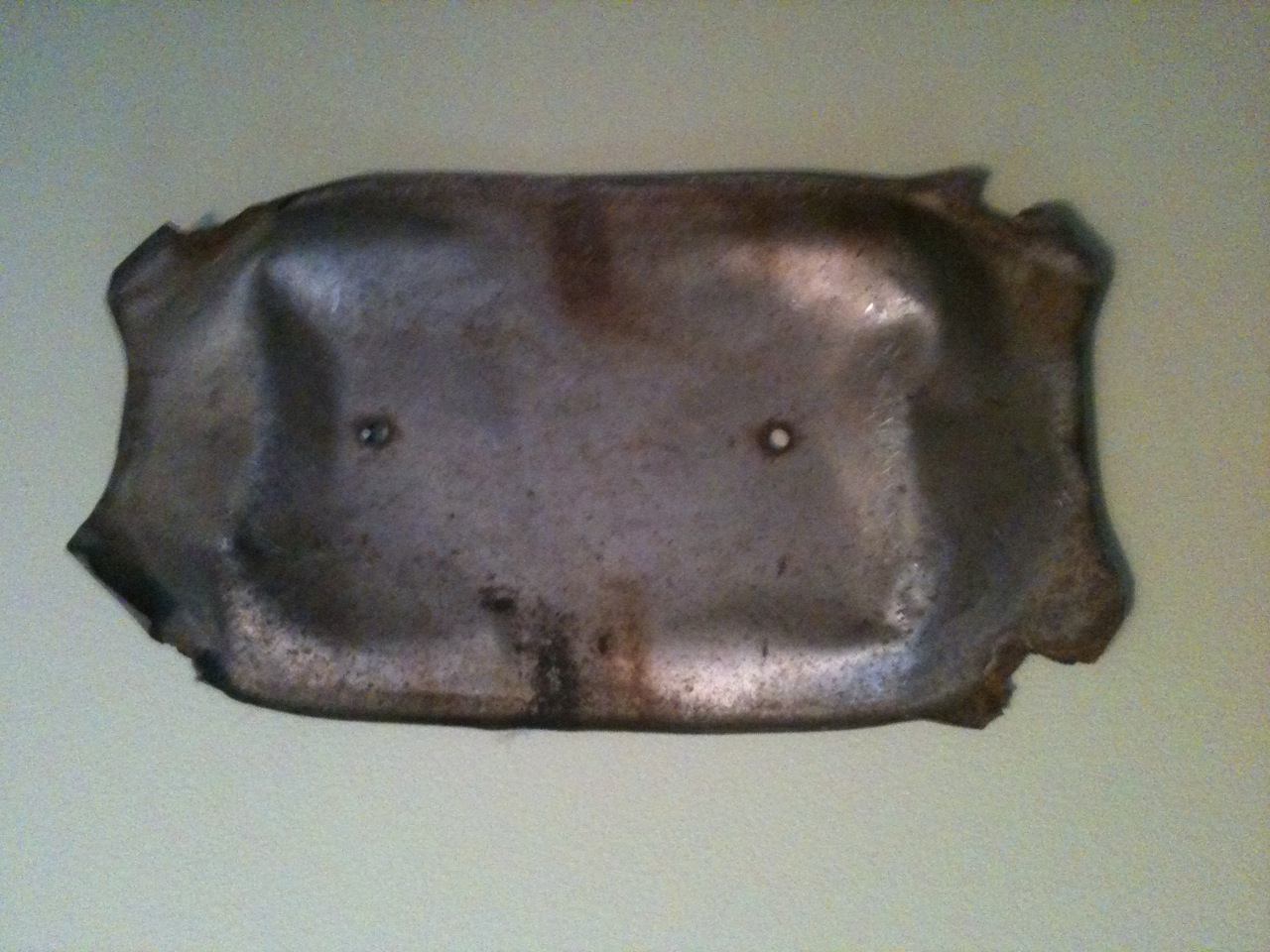Art You Don’t See
Writer Jay Orff says his collection of incidental art - upcycled industrial castoffs, flattened machinery bits left on the roadside - started with a stray 'E' and an open mind, in this essay questioning, what really constitutes art?


ONE EVENING, I GOT INTO MY FRIEND DAVE’S CAR. He pulled forward a few feet on University Avenue, where I lived at the time (near 22nd Street), and told me to “grab that ‘E’.” I was confused. He repeated, “Grab that ‘E’ on the ground.” I opened the door and saw in the gutter the large plastic “E” he was talking about. I picked it up and gave it to him. Dave had a large collection of such found items, and not just letters, but also bits of toys and jaw bones and feathers. He had an assortment of ephemera that Joseph Cornell would have found enviable. Dave glued these bits together into hallucinatory action figures, some of which he gave to me — the most unbelievable and fantastic birthday gifts I ever received.
On another evening, not long after that, I noticed a piece of metal duct work on the side of that same street in front of my house. It was perhaps 14 inches long, 10 inches wide. I ignored it. It sat in front of my house for several days. Then, one day, I was leaving again and, for the first time, really saw it. The object had been run over repeatedly on my heavily trafficked street and, in the process, had become something else. Just then, my neighbor Yuri, a brilliant violin player from Russia, appeared on the sidewalk and asked me what I had. I showed him the piece of metal I had found, and he smiled. “That’s very cool,” he said, “it looks like an open mind.” The duct work had been flattened, and there was an opening at its center with a spread of wing-like structures on the side — like an opening metal flower, or, I guess, an open mind.
I agreed with Yuri and for a brief, dizzying moment, I felt like I lived in some strange, not-quite-familiar place — the sort of place where you walk out of your house and see a stray piece of metal sitting on the roadside for a few days, waiting for you to decide when it’s just right and ready for reaping. It would be the sort of place where your neighbor might see you, and come out to offer congratulations on your gleaning and give it a name.
Since then, I have found many such sculptures lying in the street and on sidewalks: abandoned hunks of metal with an accumulated, undeniable patina of use and decay, rusted muffler bottoms, and other unidentifiable bits, like naturally occurring models of Richard Serra’s monoliths of unyielding, impenetrable being. And I think Minnesota winters have a particular talent for destroying otherwise functional bits of metal and turning them into scarred relics, making my home Minneapolis an excellent place to find such incidental artwork. Basically, these industrial castoffs look cool, and although they no longer serve their manufactured purpose, I like to think they do something significant in this, their second life, now, on my wall.
______________________________________________________
The design, the system behind these industrial parts sets forward a set of beliefs — a good and a bad, a mode of recreating and representing the world in which we want to live. The muffler is the message, so to speak.
______________________________________________________
We usually don’t think of artistic intention as being an integral part of muffler design. It seems such things are made pragmatically, for function alone and with no aesthetic or emotional concerns, not exactly, unless you want to consider industrial design an art, a mode of expression — which it is, of course. The design, the system, sets forward a set of beliefs — a good and a bad, a mode of recreating and representing the world in which we want to live. The muffler is the message, so to speak. That, however, is for another series of essays.
Generally, we want such practical artifacts of industry to serve a very specific, incontrovertible purpose — we don’t usually think about the aesthetics of ductwork (unless it’s by Frank Gehry). In calling these things art, I have taken something once purpose driven, teleological, and repurposed it, given it a new ontology where its function is vague. It’s not new — this is an art game at least a hundred years old. Really, I’m not sure it is a game, exactly; I’m uncertain how such upcycling works as a mode of artistic creation — it’s a question I’ve only begun to consider here.
Importantly, for me, these pieces have a very personal resonance. Unfortunately, Dave and Yuri are no longer here — Dave lost to cancer and Yuri gone due to somewhat mysterious circumstances. These pieces mean more to me in their absence, reminding me of my lost friends.
But I don’t know if that makes these objects art.
Broadly speaking, the pieces seem a little gimmicky. Isn’t it funny that I can hang half a muffler on the wallm and it looks like a totally reasonable bit of metal art? But I’m not drawn to do this to mock or to offer commentary on our consumerist culture. The thing is I value them, and enjoy their look and feel; I find some meaning, emotion, positive reinforcement in the fact that these things have been made, that I can pick them up and, with the help of a like-minded neighbor, interpret them, like any bit of art — even if that wasn’t these objects’ manufactured intention, even if I found them discarded on the ground. These pieces bear the grit and scars of creation, transformation, and destruction. And if what they mean now is less clear than when they served their original function, that only makes them seem more like art to me, more appropriate as objects of reflection, spiritual totems from the industrial world. One friend calls these pieces I have collected my “angels.” Sure, things fall apart and the center cannot hold, but the evidence of dissolution is actually kind of appealing. Why not hang it on your wall?
There is a mother lode of this industrial art off of Hiawatha Avenue and at other scrap metal yards on the north side, too, near the river. I’ve often thought of going into one and finding just the right car door, not for my car but to hang in my house; it should be creased and dented. I also daydream about transporting one of the giant stacks of rusting, mysterious, industrial forms I’ve seen to some public space, someplace where you can get up close and look at the patterns of rust, the grains of transformation. But I guess we have that in the Sculpture Garden. I suppose what’s interesting to me is that for some reason this alternate ‘sculpture garden’ also exists — and is, arguably, equally interesting fuel for contemplation — but it’s ignored behind a fence on 32nd Street. We drive past every day and accept it, somehow, as nothing.
______________________________________________________
About the author: Jay Orff is a writer, musician and filmmaker living in Minneapolis. His fiction has appeared in Reed, Spout, Chain and Harper’s Magazine. Read more on www.jayorff.com.